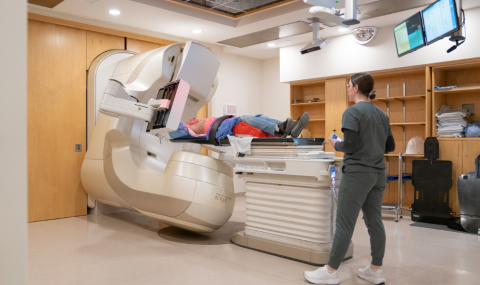Question
of the Week:
|
|
| Answer:
This is a VVI pacemaker which is under sensing (not "seeing" the native (patient's) QRS complexes). The sensitivity needs to be increased (making the sensitivity "number" smaller). The 3 letter code indicates the 1) chamber paced 2) chamber sensed 3) response to the sensed event. A VVI pacemaker can only pace the ventricle, senses ventricular activity, and when it senses a ventricular event, its response is to inhibit the next pacemaker beat. The star identifies a captured beat. The arrows indicate two pacemaker impulses that fail to produce capture. Because these two spikes occur at a time when the heart is unable to respond (during the refractory period), there is no evidence of loss of capture in this example. The under sensing is identified by the two uncaptured pacemaker spikes (identified by the arrows) that appear very close to the previous native QRS. In a VVI pacemaker, the ventricular escape interval is determined by the ventricular rate setting on the pacemaker. The ventricular escape interval is the distance from one pacemaker impulse to the next. The faster the ventricular rate setting, the shorter the interval. In the VVI mode, the pacemaker will fire continuously at this interval, unless it is "interrupted" by a native beat that occurs before the pacemaker fires. When the VVI pacemaker functions properly, it inhibits and "resets its clock" to the same ventricular escape interval each time it "sees" a native QRS. Thus, if the patients rate is faster than the pacemaker, each native QRS will appear before the ventricular escape interval lapses, and the pacemaker impulses will be repeatedly inhibited. We do not know the ventricular escape rhythm in this example (we don't know the pacemaker rate nor do we have two consecutive pacemaker beats to measure). We know that the interval must be longer than the distance from the native beat to the uncaptured spikes (identified by the horizontal lines), or the pacemaker would fire repeatedly at that interval. Thus, the pacemaker fired because it didn't see the native QRS. When the sensitivity
is increased, the sensitivity value becomes lower. The sensitivity
value corresponds to how tall the QRS must be before the pacemaker can
see it. Thus, lower the sensitivity value means that the pacemaker
will be able to recognize smaller QRSs.
|
|
|




